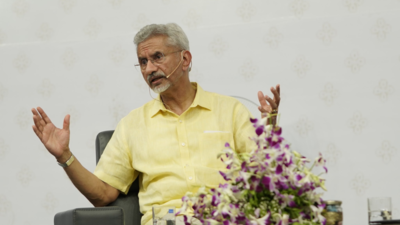Dreams on hold: Indian students face the heat of Australia’s visa overhaul

In what is being seen as a seismic shift in global education mobility, Australia’s decision to drastically tighten its student visa regulations has triggered growing disquiet among Indian aspirants and education stakeholders alike. With migration figures reaching unprecedented levels, the Albanese government has moved swiftly to recalibrate its immigration framework — but the resulting fallout has disproportionately impacted students from South Asia, particularly India. The latest reforms have led not only to a sharp drop in visa approvals but have also raised uncomfortable questions around discrimination, transparency, and the future of Indo-Australian educational cooperation.
A policy pivot with far-reaching consequences
At the heart of the changes lies Australia’s ambition to halve its net migration by 2025, a political commitment underscored by rising domestic concerns over housing, infrastructure, and job market pressures. But in responding to these internal compulsions, the government has turned a critical eye towards its international education system — long regarded as a key driver of both soft power and economic revenue.
From March 2024, a new suite of visa rules has come into effect, ushering in stricter English-language proficiency thresholds, more rigorous eligibility criteria, and enhanced monitoring of education agents facilitating international enrolments. These reforms, while framed as safeguards against misuse of the student visa pathway for work or residency, have created an atmosphere of uncertainty that many argue borders on exclusionary.
India: From strategic partner to collateral damage?
The impact on Indian students — traditionally the second-largest international student cohort in Australia — has been particularly stark. Data from media reports suggests that between December 2022 and December 2023, there was a 48% decline in student visas granted to Indian nationals. The figures, though framed as the outcome of tightened scrutiny across the board, reveal a pattern of targeted rejection. Other South Asian countries have fared no better: student visa approvals for Nepalese applicants dropped by 53% and for Pakistani students by 55% over the same period.
Worryingly, these figures coincide with fresh reports of one in every five Indian student applications being rejected as of March this year, alongside a backlog of cases languishing in administrative limbo.
Institutional pushback and the risk rating conundrum
As the visa regime tightens, universities themselves have begun recalibrating their enrolment strategies in anticipation of increased scrutiny from immigration authorities. A growing number of Australian institutions are now actively reviewing their admissions policies, with some implementing drastic restrictions.
Central Queensland University, for instance, recently issued a communication to its education agents, stating that it would no longer accept applications from students from India or Nepal for English language courses. Moreover, the university has barred enrolments from married applicants and those aged above 25, unless applying for a research programme — a move that has drawn sharp criticism for its arbitrary nature and perceived racial undertones.
These shifts are largely driven by the government’s institutional risk rating system, which assesses universities based on the likelihood of enrolling “non-genuine” students. Only Level 1 institutions — deemed low-risk — are seeing visa applications processed expeditiously. In contrast, those downgraded to Level 2 or 3 have witnessed significant slowdowns. According to updates from May, nine universities have been demoted to Level 2 and two to Level 3, further limiting opportunities for international students from higher-risk countries.
A growing trust deficit
The resulting climate has fostered a deep sense of betrayal among students and education facilitators, many of whom feel that Australia’s once-open doors are now closing without warning. Several students have reported being asked to defer their offers, while others have withdrawn applications entirely, citing the unpredictability of visa decisions and lack of clarity on compliance requirements.
Australia’s reforms have also cast a long shadow over its diplomatic relationship with India. While both nations have deepened strategic ties in recent years, particularly in defence and trade, the current visa turmoil threatens to erode goodwill on the educational front — an area once seen as a cornerstone of soft diplomacy.
Australia’s student visa overhaul may be grounded in legitimate concerns around immigration integrity and labour market stability. However, its execution appears to have created an uneven playing field — one that risks alienating genuine applicants and sending damaging signals to partner countries like India.
As policymakers seek to balance internal priorities with international expectations, the real cost may be borne by a generation of students who see their educational dreams slipping away amid red tape and reform. If left unaddressed, the crisis may not only disrupt enrolments in the short term but also compromise Australia’s standing as a global education hub in the years to come.





